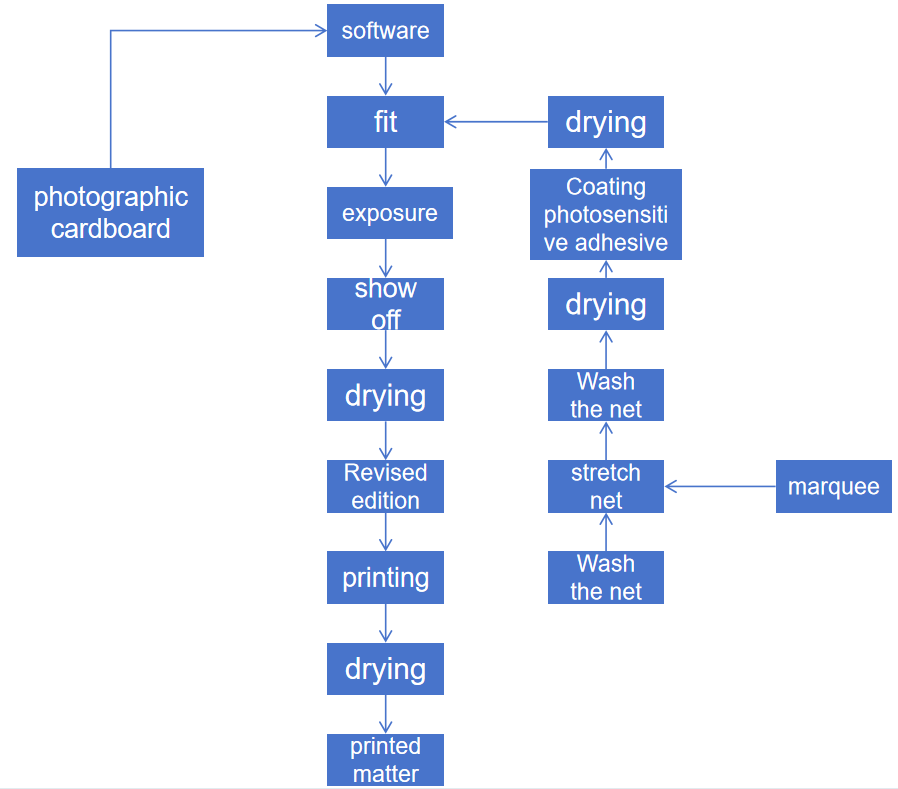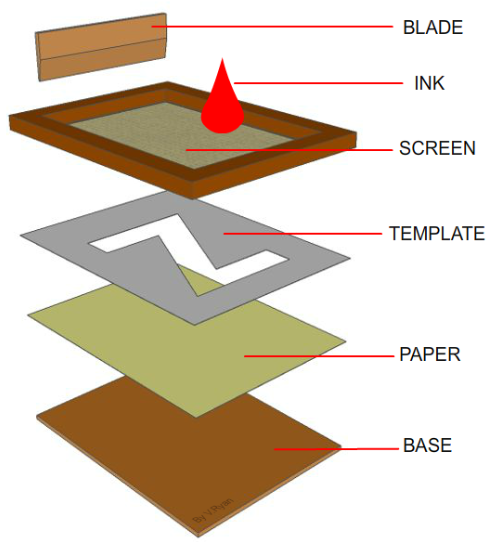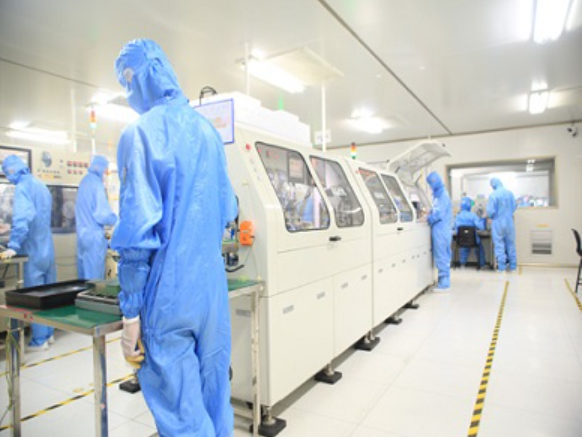Introduction to screen printing process
Introduction to the screen printing process Screen printing is to stretch silk fabric, synthetic fiber or metal mesh on the screen frame, using photosensitive materials to make a screen printing plate through the method of photographic plate making, so that the picture and text on the screen printing plate can be The mesh is a through hole, and the screen holes in the non-graphic part are blocked. During printing, the printing colloid is transferred to the substrate through the mesh in the graphic part through the squeezing of the scraper, forming a pattern that is the same as the original. arts. Printing methods are usually divided into manual printing and mechanical printing.
Screen printing technology is constantly improving and is widely used in many fields due to its simple equipment, easy operation, simple and low-cost printing and plate making, large printing area, rich printing quality, three-dimensional effect and strong adaptability. In the manufacturing process of LCD displays, before box making (that is, the joining of two upper and lower glass substrates), screen printing technology is used to print the common electrode transfer points and sealant onto the display glass substrate.
Screen printing process and principle
The process flow of screen printing is shown in Figure 1.

(Figure 1: Screen printing process flow)
Screen printing uses the basic principle that ink can pass through the mesh in the graphics and text parts, and ink cannot pass through the mesh in the non-graphics and text parts. When printing, pour ink on one end of the screen printing plate, use a squeegee to apply a certain amount of pressure on the ink level on the screen printing plate, and move it toward the other end of the screen printing plate at the same time, During the movement, the ink is squeezed by the scraper from the mesh of the graphic part onto the substrate. Due to the viscosity of the ink, the imprint is fixed within a certain range. During the printing process, the scraper always maintains a certain gap between the screen printing plate and the substrate, so that the screen printing plate during printing generates a reaction force on the scraper through its own tension. This reaction force is called rebound force. Due to the effect of resilience, the screen printing plate and the substrate are only in moving line contact, while other parts of the screen printing plate are separated from the substrate, causing the ink and screen to break, ensuring the printing dimensional accuracy and ensuring Avoid smearing the substrate. When the scraper scrapes across the entire page and then lifts up, the screen printing plate also lifts up and gently scrapes the ink back to its original position. At this point, a complete printing process is completed. (As shown in Figure 2: Schematic diagram of screen printing)

(Figure 2: Schematic diagram of screen printing)
Precautions for screen printing
(1) Guarantee of cleanliness:
People are one of the important factors that generate dust. The screen printing process of LCD displays has extremely high requirements for environmental purification. Therefore, everyone who enters the clean room must strictly follow the ultra-purification requirements to dress, operate and clean the environment.
(2) Preparation work before printing:
Doing a good job in preparation before printing is an indispensable link to ensure the smooth progress of printing. It mainly includes the following aspects.
》Clean up the printing site, ensure there is a certain operating space around the printing table or printing machine, avoid other objects from interfering with the operation, keep the site clean, and avoid dust and other factors affecting the printing quality (as shown in Figure 3, Hot Display’s production workshop achieves dust-free and clean management , all employees entering the workshop must wear special dust-proof clothing and be cleaned with purification equipment before entering the production workshop)
》Pay attention to adjusting the humidity and temperature of the printing workshop to adapt to printing requirements
》Prepare a suitable scraper and check for bruises or excessive wear
》Check whether the screen printing plate is in good condition, correct any problems found in time, and ensure that the screen printing plate is surrounded by graphics and text to avoid ink leakage in non-graphics and text parts.
》Adjust the gap between the screen printing plate and the substrate according to the characteristics of the substrate
》Check whether the color and viscosity of the ink used meet the requirements
》Check whether the oven temperature reaches the specified value and prepare the drying equipment for use.
》Check whether the materials used are complete, whether the specifications and models meet the product requirements, and whether the tools and tools (scrapers, rubber shovels, etc.) used are in good condition.
》In addition, attention should be paid to other related preparations according to actual needs, such as whether the tooling is adequate or not.

(Figure 3: Xinhongtai Technology Production Workshop)
(3) Control of printing process:
In the process of "printing → placing → drying → next process" of the product, not only the printing quality of the product must be checked regularly, but also attention must be paid to strictly controlling the time the product stays in each tooling and the air to improve labor efficiency and product quality.
For more knowledge about display screen production technology, please contact us!
Recommended related articles:
LCD screen cleaning and drying process
Photolithography process in LCD display manufacturing process
